Welcome to “Flower Gardening Tips For Small Spaces,” where the beauty of blooms meets the art of maximizing every inch of your garden. Whether you’re a novice excited to plant your first marigold or a seasoned gardener looking to optimize your urban oasis, this guide is here to inspire and empower you.
In small spaces, creativity flourishes, allowing you to craft vibrant, personal sanctuaries that enchant and delight. By embracing our practical tips and innovative design strategies, you will discover the joy of transforming even the tiniest nook into a lush, colorful retreat.
This guide is your companion on a journey to vibrant flower gardening, providing actionable advice that ensures your plants not only survive but thrive. With our guidance, you’ll gain practical insights that lead to bountiful blooms and a newfound confidence in your green-thumb abilities.
Choose Compact Flower Varieties
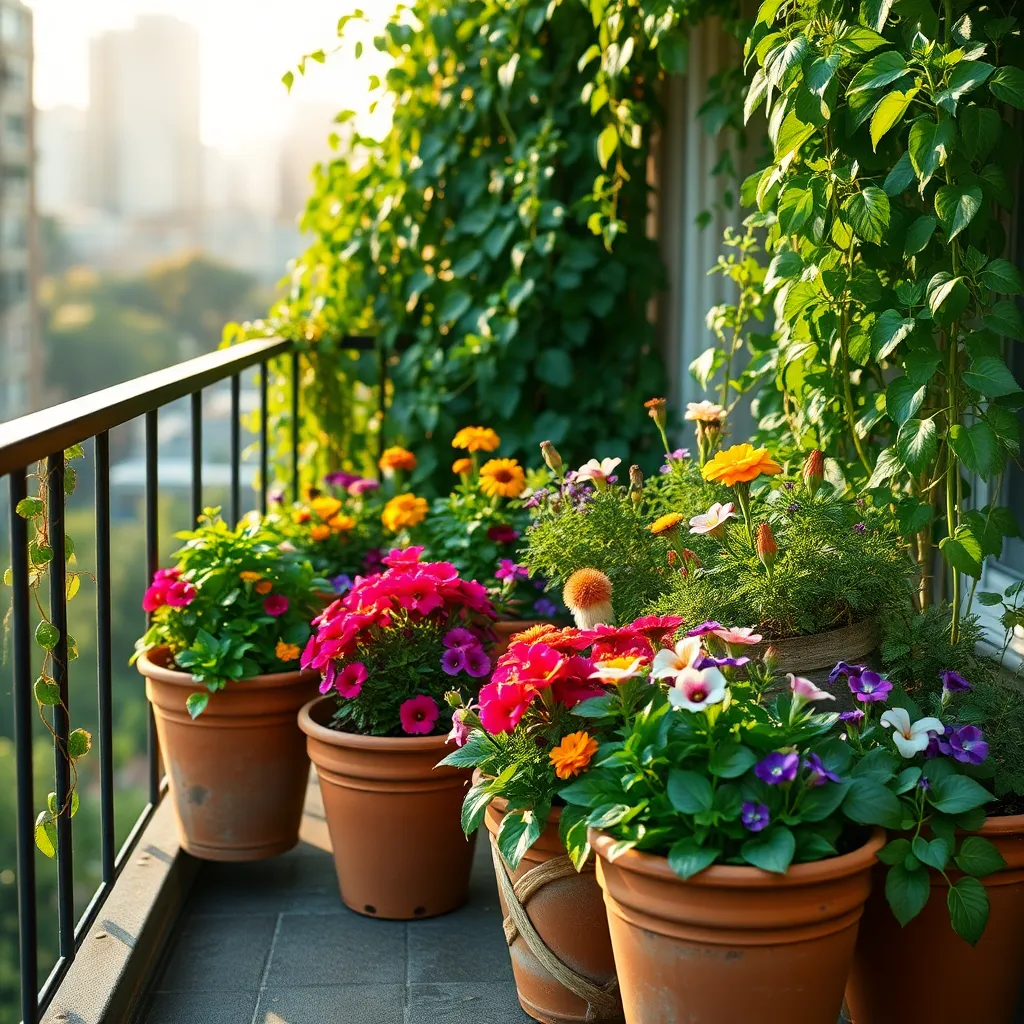
When space is limited, choosing compact flower varieties can make a big difference in how lush and vibrant your garden appears. Look for dwarf or miniature versions of your favorite flowers, such as dwarf zinnias or mini roses, which thrive in smaller settings without sacrificing beauty.
Consider the growth habits of these compact varieties to ensure they suit your space. Many compact flowers, like the dwarf marigold, not only save space but also provide a full season of blooms with minimal maintenance.
To get the best results, plant your compact flowers in containers with well-draining soil and ensure they receive the appropriate amount of sunlight. Most compact varieties require at least 6 hours of sunlight daily, so place them in areas that maximize exposure.
Watering needs for compact flowers are often less than their larger counterparts, but consistency is key. Aim to water them thoroughly once the top inch of soil feels dry, which typically happens every few days depending on your climate.
For advanced gardeners, consider using a slow-release fertilizer to provide nutrients over a longer period. This will help maintain the vigor of your compact flowers and ensure they continue to bloom profusely throughout the growing season.
Utilize Vertical Planting Solutions
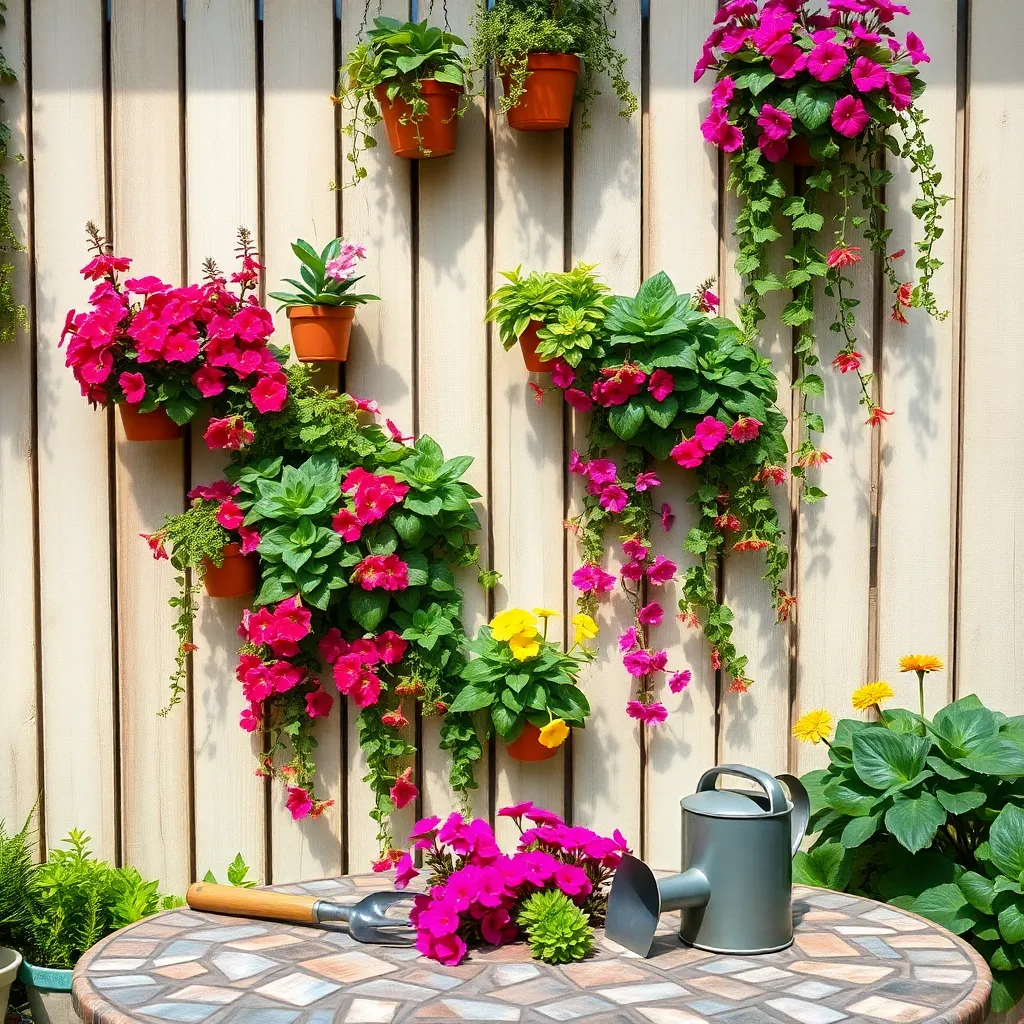
Vertical planting solutions allow you to maximize limited space while creating a stunning visual display. Consider using wall-mounted planters or hanging baskets to add layers of flowers, transforming even the smallest areas into lush, colorful spots.
For beginners, start with easy-to-grow plants like petunias or fuchsias that thrive in hanging baskets. These flowers require well-draining soil and should be watered consistently, ensuring the soil remains moist but not soggy.
More experienced gardeners might experiment with vertical trellises to support climbing flowers such as clematis or sweet peas. These plants will benefit from a rich, loamy soil and need to be pruned regularly to encourage more blooms and maintain a tidy appearance.
To enhance vertical planting, integrate a mix of perennial and annual flowers for a dynamic and ever-changing display. Layering different plant types not only maximizes space but also provides diverse textures and colors throughout the growing season.
Incorporate Hanging Baskets Creatively
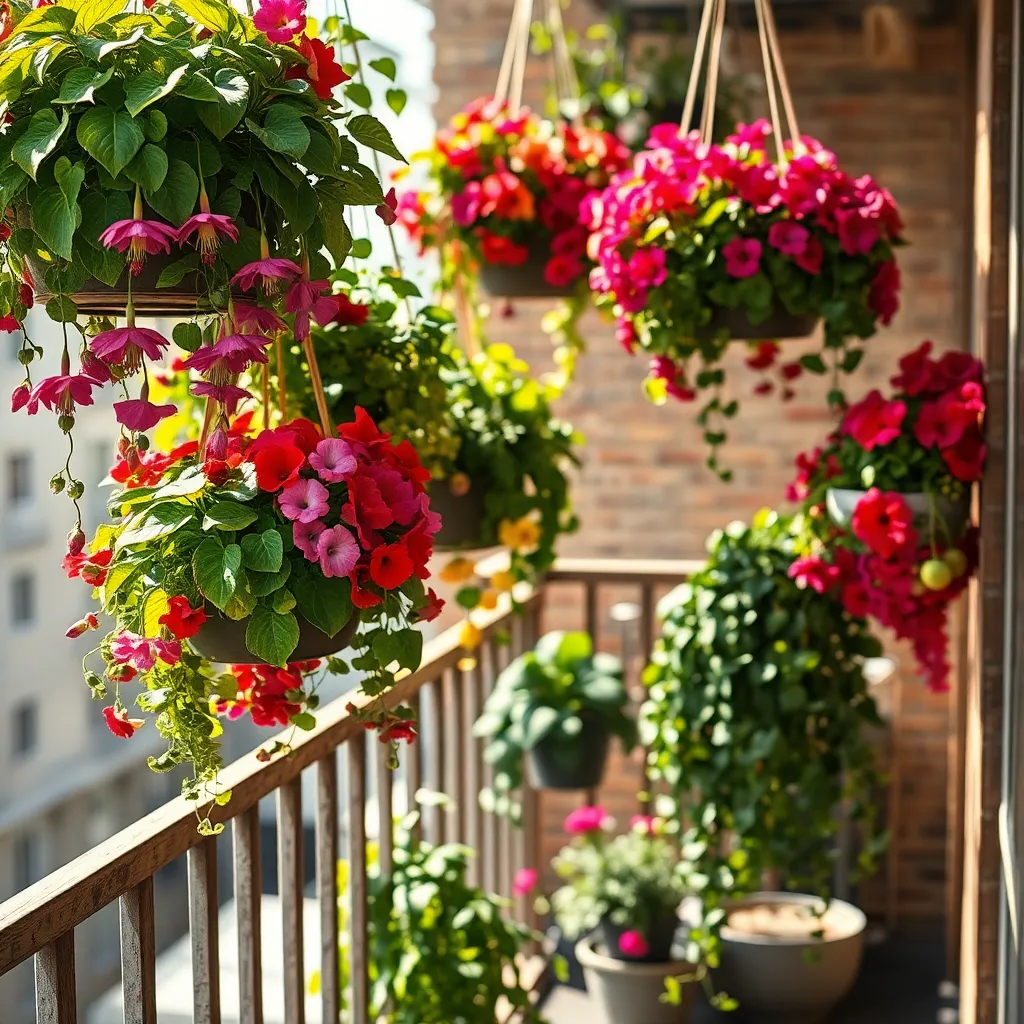
Hanging baskets are a wonderful way to add visual interest and maximize space in a small garden. Select lightweight containers made of materials like plastic or coco fiber to make them easy to hang and move as needed.
Choose plants that thrive in smaller root spaces, such as petunias, fuchsias, or succulents. These plants not only look stunning cascading over the sides but also thrive in the limited soil environment of a hanging basket.
Ensure that your hanging baskets receive the right amount of sunlight by placing them in locations that match their light requirements. For example, place shade-loving plants like ferns in areas with partial shade, while sun-loving varieties like ivy geraniums can be positioned to receive full sunlight.
Watering is crucial for hanging baskets, as they tend to dry out faster than ground-planted counterparts. Check moisture levels daily, especially during hot weather, and water until it drips from the bottom to ensure deep hydration.
For added nourishment, incorporate a slow-release fertilizer into the soil before planting. This will provide a steady supply of nutrients to your plants, promoting lush growth and vibrant blooms throughout the growing season.
Select Multi-Season Bloomers
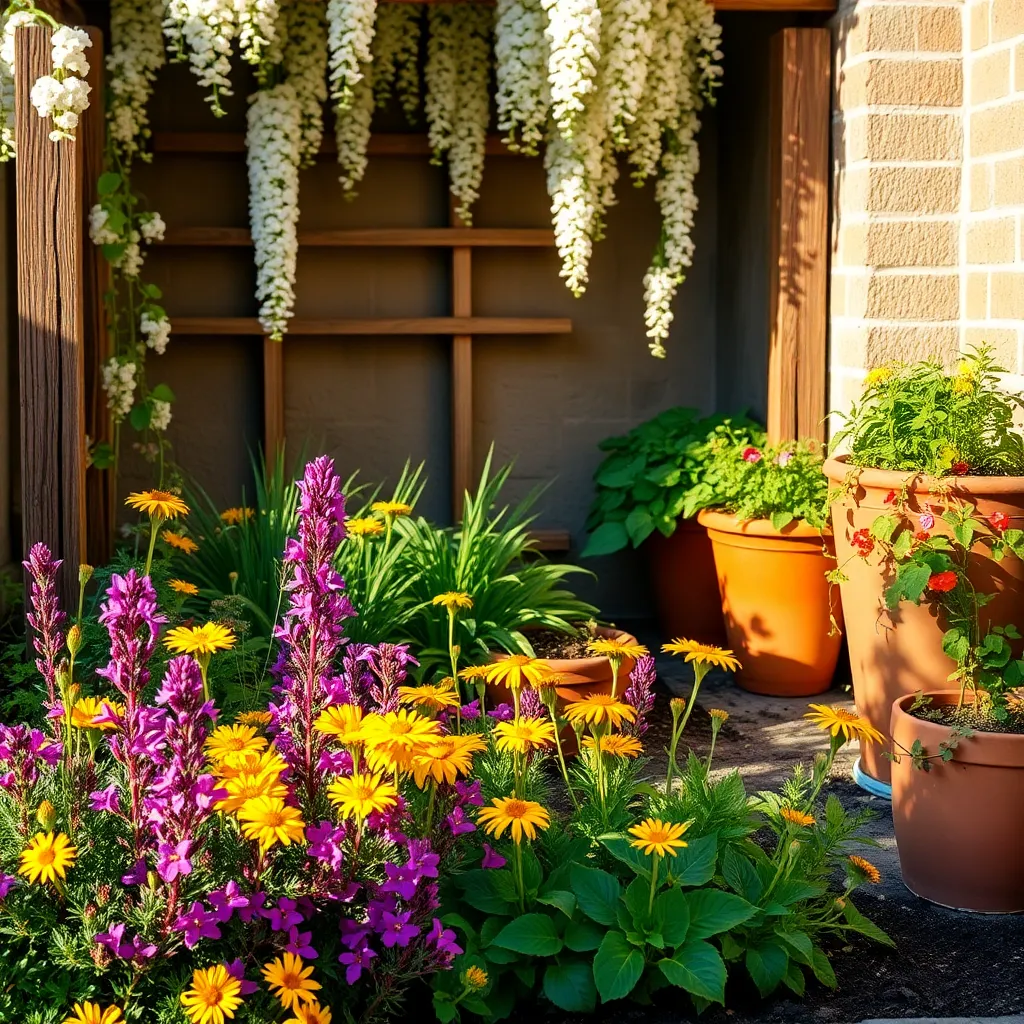
To maximize your small garden space, consider planting multi-season bloomers that provide beauty throughout the year. These plants not only save space but also reduce the need for frequent replanting, making your gardening experience more enjoyable and less labor-intensive.
When selecting multi-season bloomers, opt for varieties that thrive in your local climate with minimal care. For instance, plants like Rudbeckia and Salvia are hardy choices that offer vibrant flowers across multiple seasons.
It’s essential to ensure these plants receive the right amount of sunlight and water to flourish. Most multi-season bloomers prefer well-draining soil and require about 1 inch of water per week, either from rainfall or supplemental watering.
For those with a bit more gardening experience, try creating a staggered planting schedule to enjoy continuous blooms. By carefully selecting varieties that bloom at different times, you can enjoy a colorful display from early spring to late fall without needing to replant.
Maximize Space with Container Pots
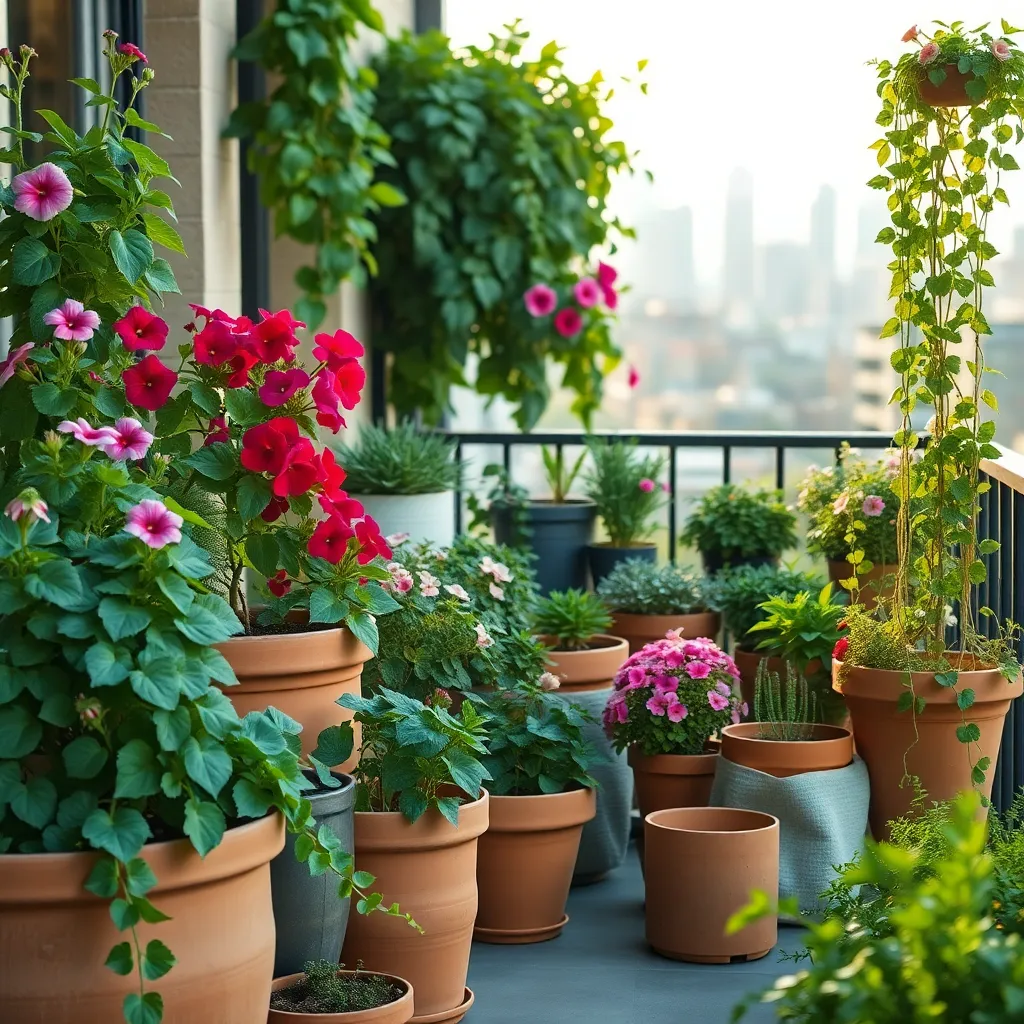
Container pots are an excellent way to make the most of limited gardening space, offering versatility and portability. This allows you to rearrange your blooms as needed, ensuring they receive optimal sunlight throughout the growing season.
Choosing the right pot is crucial; opt for containers with drainage holes to prevent waterlogging. Materials like terracotta and ceramic are breathable, helping to regulate soil moisture and temperature—ideal for both beginners and seasoned gardeners.
When selecting soil, use a high-quality potting mix that retains moisture yet drains well to support healthy root growth. Adding a layer of gravel at the bottom of your container can further improve drainage, a simple yet effective technique for vigorous plant health.
Watering is a key aspect of container gardening; it’s important to water thoroughly but not too frequently, allowing the top inch of soil to dry out between waterings. For more advanced care, consider using a moisture meter to tailor your watering schedule to the specific needs of each plant.
- Select the right container: Ensure it has drainage holes to prevent root rot.
- Choose a suitable potting mix: Opt for one that retains moisture but allows for adequate drainage.
- Monitor watering needs: Use a moisture meter for precise care.
Maximizing space with container pots not only allows you to grow a variety of plants but also makes gardening accessible to those with limited outdoor areas. Experimenting with vertical arrangements or tiered setups can further enhance your garden’s visual appeal and space efficiency.
Conclusion: Growing Success with These Plants
As we close our exploration of flower gardening tips tailored for small spaces, let’s revisit the five essential relationship concepts that not only transform your garden but also cultivate harmony in your personal connections. Firstly, we learned about the importance of nurturing the foundation, just like soil preparation for healthy growth. Secondly, selecting the right plants mirrors choosing compatible partners, ensuring long-lasting bonds. Thirdly, consistent care and communication are vital, much like regular watering and pruning. Fourthly, embracing diversity, akin to mixing various blooms, enriches the garden and our interactions. Lastly, patience is key, allowing both gardens and relationships to flourish over time.
To put these insights into action, consider starting a small gardening project with a loved one, fostering teamwork and shared goals. As you embark on this journey, remember to bookmark this article for easy reference, ensuring these valuable insights remain at your fingertips.
With these principles, you are equipped to nurture not only a vibrant garden but also thriving relationships. Let this be your stepping stone towards lasting relationship success, where love and understanding blossom beautifully over time. Save this guide and revisit it whenever you need a reminder of the power of cultivating care and connection in every aspect of life.

